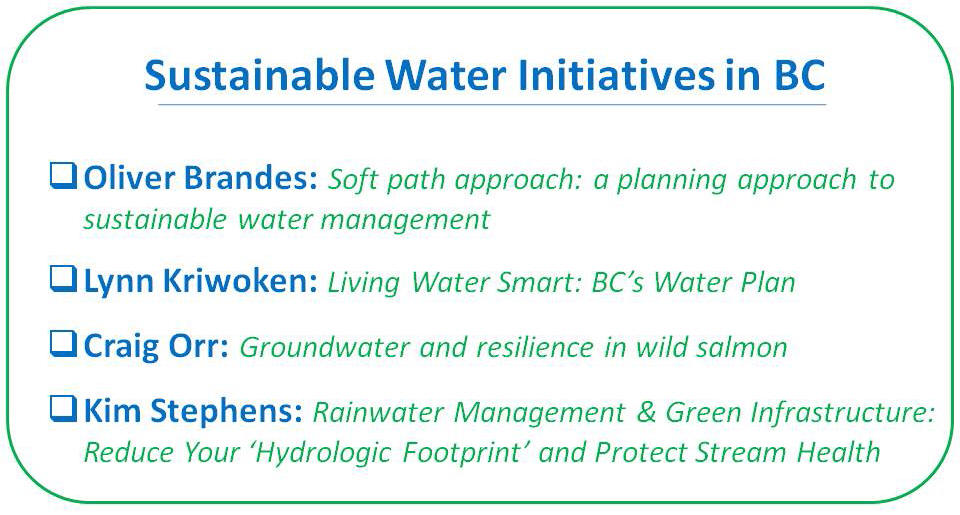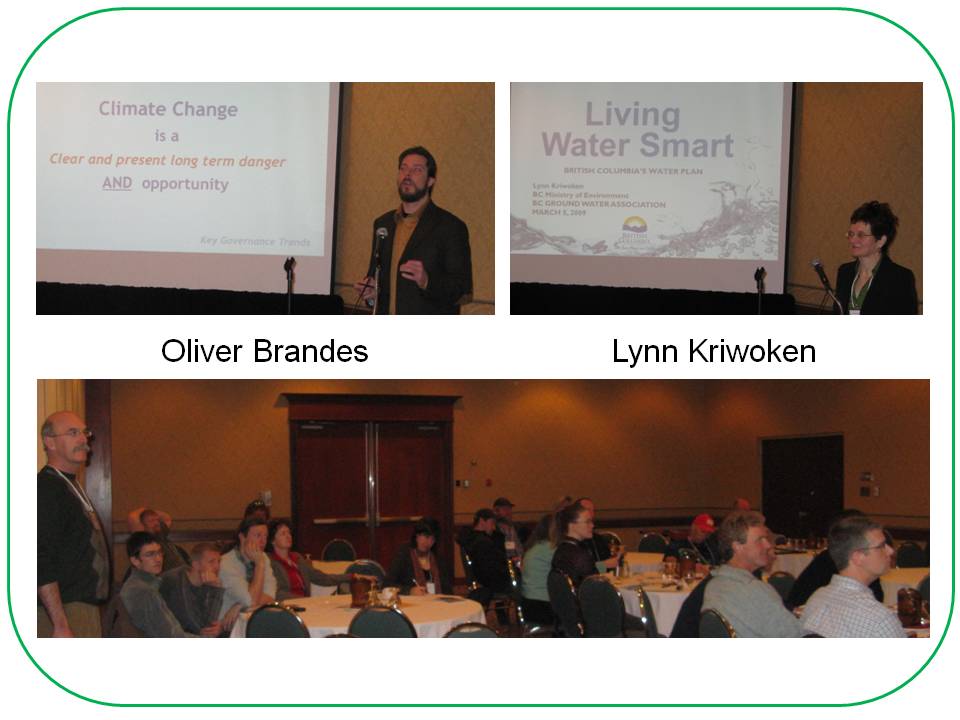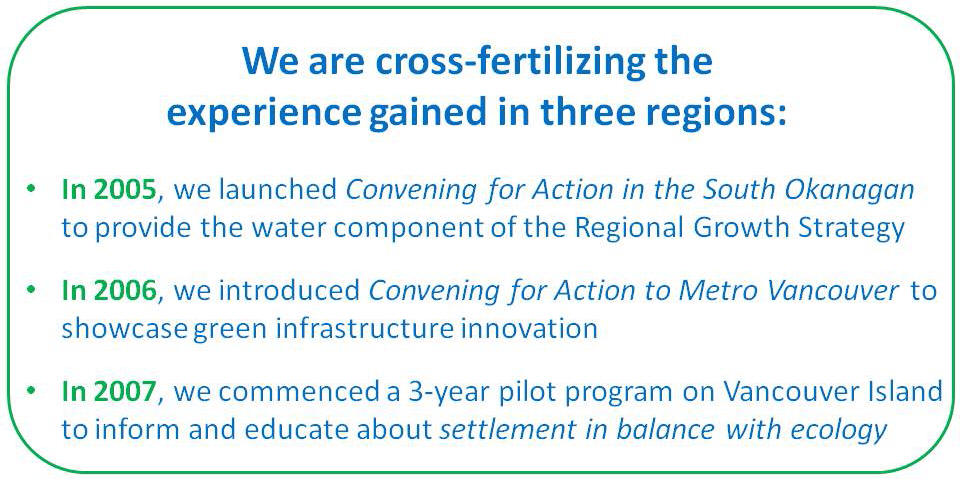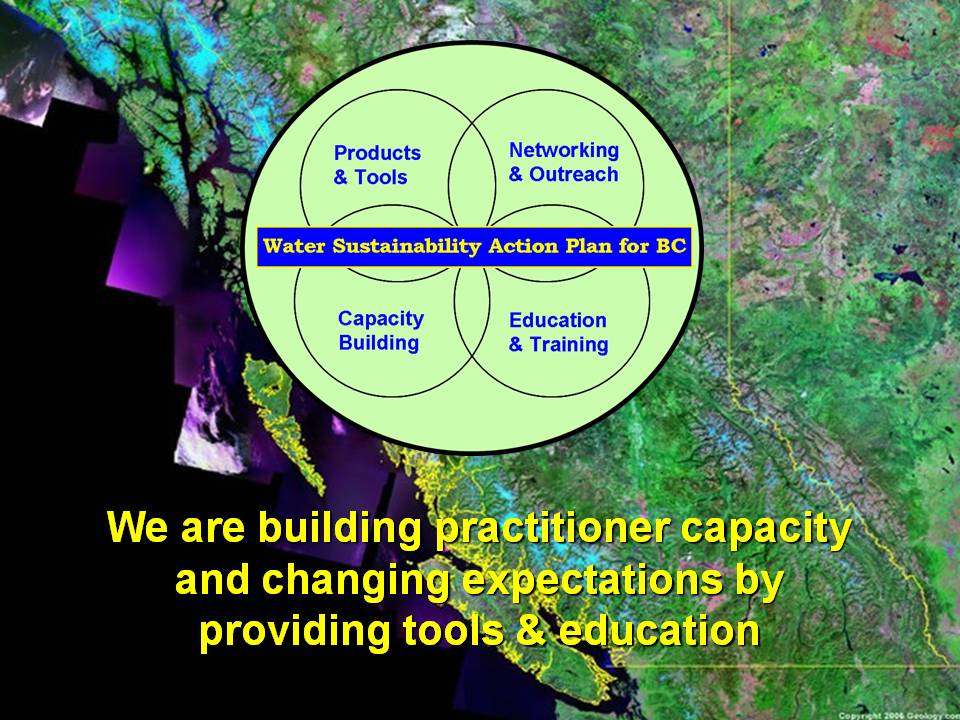Rainwater Management and Green Infrastructure: Reduce Your ‘Hydrologic Footprint’ and Protect Stream Health
Water Sustainability in BC
The technical program for the 2009 BC Ground Water Association Convention included a session on water sustainability so that the groundwater community would be informed about provincial initiatives underway in BC, and the implications for groundwater. The four presentations comprising the session are listed below:
 “The speakers/presentations were cascading in scope…from high-level to ground-level. Their unifying theme was how can we create the future that we want,” states Gilles Wendling, technical program co-organizer. To view the set of presentations, click on 2009 Convention Presentations.
“The speakers/presentations were cascading in scope…from high-level to ground-level. Their unifying theme was how can we create the future that we want,” states Gilles Wendling, technical program co-organizer. To view the set of presentations, click on 2009 Convention Presentations.
How Land is Developed
After Oliver Brandes and Lynn Kriwoken had provided the ‘big picture’, Kim Stephens, Program Coordinator for the Water Sustainability Action Plan for British Columbia, elaborated on why water sustainability will be achieved by implementing green infrastructure policies and practices..
“My presentation was organized in three parts. FIrst, to provide the audience with context, it was necessary to introduce the Action Plan. Next came an explanation of what Rainwater Management means in practice and why it is at the heart of Green Infrastructure. Finally, I elaborated on how we are ‘convening for action’ in three regions to do business differently,” states Kim Stephens.
Connecting the Dots
“In speaking to a groundwater-oriented audience, my objective was to connect the dots between land development activities and groundwater protection. In particular, I wanted to eatablish the relevance of the hydrologic footprint concept. The  equation is a simple one: reducing our hydrologic footprint is good for the groundwater resource….because protecting the land surface from being stripped and paved reduces rainwater runoff and increases the potential for groundwater recharge.”
equation is a simple one: reducing our hydrologic footprint is good for the groundwater resource….because protecting the land surface from being stripped and paved reduces rainwater runoff and increases the potential for groundwater recharge.”
To download a copy of his presentation, click on Rainwater Management and Green Infrastructure: Reduce Your Hydrologic Footprint and Protect Stream Health
Convening for Action in British Columbia
Informing and Education Practitioners
“The main focus of my presentation was on our efforts to build capacity and change land development expectations through the Learning Lunch Seminar Series. In 2008, the pilot region for a collaborative and inclusive approach was Vancouver Island,” reports Kim Stephens.
“The objective of the Vancouver Island pilot was to demonstrate how to advance a consistent provincial approach. We have shown that this consistency is best achieved by taking a continuing education program into the places where local government practitioners work.”
“The June 2008 release of Living Water Smart provided a timely provincial frame-of-reference for the Vancouver Island Learning Lunch Series. In particular, we were able to demonstrate what Living Water Smart means on the ground.”






